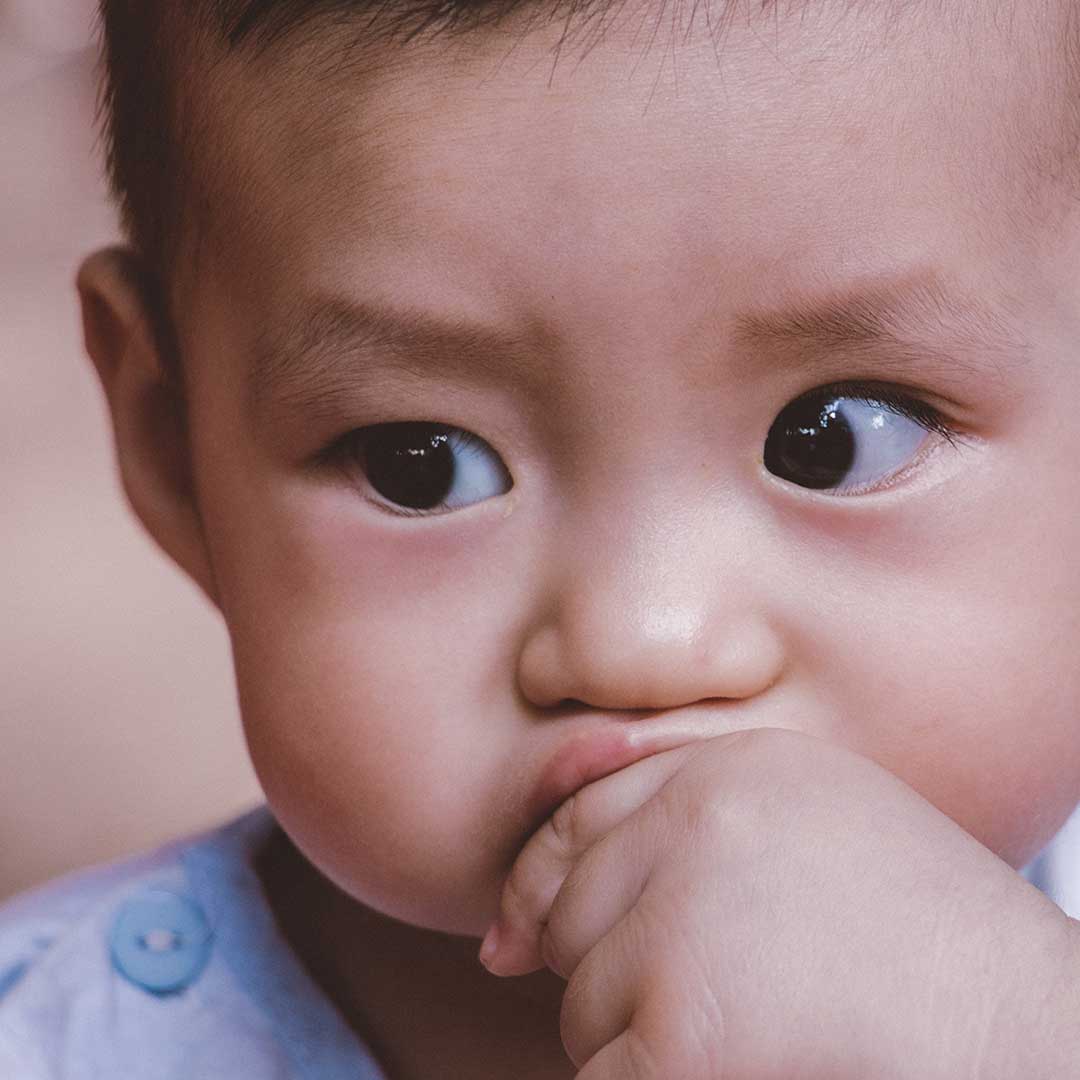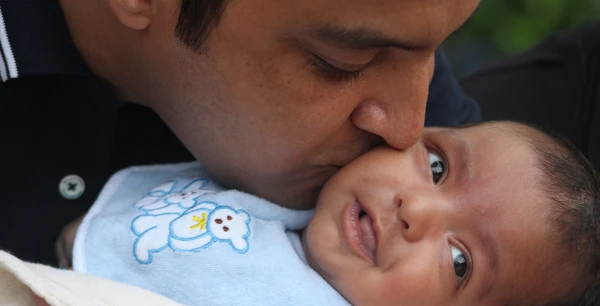As your little one grows, their sleep needs continue to evolve. At 10 months, babies are full of curiosity and energy, which makes sleep even more essential. A consistent, gentle approach to sleep will help your baby get the rest they need while making bedtime smoother for everyone.
In this guide, we’ll walk through everything you need to establish a 10-month-old sleep schedule that supports your baby’s development and well-being while also ensuring you get the rest you need.
10 month old Sample Sleep Schedule
| Time | Activity | Details |
|---|---|---|
| 7:00 AM | Wake Up | Start the day with a morning feed |
| 7:30 AM | Breakfast | Solid food meal |
| 8:00 AM | Playtime | Floor play, crawling, or outdoor exploration |
| 10:00 AM | Morning Nap | 1–1.5 hours |
| 11:30 AM | Wake Up | Light play, snack time |
| 12:00 PM | Lunch | Balanced solid food meal |
| 2:30 PM | Afternoon Nap | 1–1.5 hours |
| 4:00 PM | Wake Up | Light activities and snack |
| 6:00 PM | Dinner | Solid food meal |
| 6:30 PM | Wind Down | Bath, books, and cuddles |
| 7:30 PM | Bedtime | Nighttime sleep begins |
This routine provides enough sleep while allowing some flexibility. If your baby resists naps or wakes early, adjust wake windows slightly but keep the overall structure intact.

10-Month-Old Sleep Patterns: What to Expect
By 10 months, your baby needs about 13.5 to 14 hours of total sleep per day, including:
- 11–12 hours of nighttime sleep
- 2–3 hours of daytime sleep, typically spread across two naps
While some sources suggest a slightly wider range of sleep totals, consistency and quality of sleep matter just as much as the number of hours. Keeping a predictable routine will help your baby get the rest they need.
Developmental Milestones and Sleep Disruptions
At this stage, your baby is likely hitting exciting milestones, which can temporarily impact sleep.
- Motor Skills: Many babies are crawling, pulling up, and even cruising along furniture. Practicing these skills—even in the crib—can lead to night wakings.
- Communication Growth: Your baby is babbling more, responding to simple words, and understanding gestures. This newfound awareness can lead to overstimulation before bedtime.
- Separation Anxiety: Around this age, many babies begin to show signs of separation anxiety, which can lead to bedtime protests or night wakings. A comfort object or a reassuring, consistent response can help ease this transition.
If your baby’s sleep is temporarily disrupted, stay consistent and reassure them—but avoid introducing new habits (like rocking or feeding to sleep) that could become sleep crutches.
Creating a Gentle and Effective Sleep Schedule
At 10 months, your baby is ready for a more structured but still flexible routine.
Key Sleep Principles
- Watch Wake Windows: Babies this age typically stay awake for 2.75 to 3.5 hours at a time. The wake window before bedtime is usually the longest.
- Encourage Independent Sleep: Place your baby in their crib drowsy but awake so they learn to fall asleep on their own.
- Create a Soothing Bedtime Routine: Keep bedtime consistent with calming activities like bath time, a book, and gentle cuddles before placing them in the crib.
Addressing Common Sleep Challenges
10-Month Sleep Regression
Some babies go through a 10 month sleep regression around this time due to developmental leaps. If your baby suddenly struggles with sleep, stay consistent with their routine and offer comfort without creating new habits (like rocking to sleep).
Standing in the Crib
If your baby is pulling up and getting stuck standing in the crib, practice “falling down” skills during the day. If they wake up standing, gently encourage them to lie back down instead of repeatedly laying them down yourself.
Early Morning Wakings
- Ensure bedtime is not too early or too late.
- Keep the room dark and use white noise to block out early-morning disturbances.
- If they wake up before 6:00 AM, treat it like a night waking and encourage them to go back to sleep.
Separation Anxiety
- Introduce a lovey (if safe) to provide comfort.
- Use a calm, reassuring presence but avoid prolonged rocking or feeding back to sleep.
- Practice short, happy goodbyes during the day to help ease anxiety at bedtime.
Night Wakings
If your baby wakes during the night, respond consistently. Try the Sleep Lady Shuffle:
- Comfort them with gentle words or touch while keeping them in the crib.
- Avoid picking them up unless they are very distressed.
- Gradually move farther away over several nights, giving them space to settle independently.
Gentle Sleep Coaching and the Sleep Lady Shuffle
At 10 months, many parents consider sleep coaching to help babies sleep independently. The Sleep Lady Shuffle is a gentle alternative to “cry it out.”
How to Do the Sleep Lady Shuffle
- Night 1–3: Sit next to the crib and offer verbal and physical reassurance as needed. Avoid picking your baby up.
- Night 4–6: Move your chair halfway across the room. Continue soothing from a slight distance.
- Night 7–9: Sit at the door and reassure only as needed.
- Night 10+: Leave the room and return for brief check-ins as necessary.
By gradually giving your baby space, they learn to self-soothe while still feeling secure.
Final Tips for a Restful Night
✔ Keep a consistent bedtime routine – Predictability helps babies feel secure.
✔ Ensure naps are balanced – Too much or too little daytime sleep can affect nighttime rest.
✔ Use white noise – This can help block out household or early-morning noises.
✔ Adjust gently – Small shifts in schedule (15–30 minutes) are more effective than abrupt changes.
✔ Stay consistent – Babies thrive on routine, so avoid changing sleep strategies frequently.
Your Baby Can Sleep Well
Your 10-month-old is capable of sleeping well with the right balance of routine, reassurance, and independence. If sleep regressions or disruptions occur, stay consistent, offer comfort, and encourage self-soothing skills.
You’re doing an amazing job! Keep focusing on gentle, consistent sleep habits, and soon everyone in your household will be getting the rest they need.
Citations
- M. Hirshkowitz, M. Hirshkowitz, Kaitlyn Whiton, S. Albert, C. Alessi, O. Bruni, L. Doncarlos, Nancy L Hazen, J. Herman, E. Katz, L. Kheirandish-Gozal, D. Neubauer, A. O’donnell, M. Ohayon, J. Peever, R. Rawding, R. Sachdeva, B. Setters, MICHAEL V. Vitiello, J. Ware and P. Hillard. “National Sleep Foundation’s sleep time duration recommendations: methodology and results summary..” Sleep health, 1 1 (2015): 40-43 . https://doi.org/10.1016/j.sleh.2014.12.010.
- American Academy of Pediatrics, “Language Development: 8 to 12 Months,” HealthyChildren.org, August 1, 2009, https://www.healthychildren.org/English/ages-stages/baby/Pages/Language-Development-8-to-12-Months.aspx.
- American Academy of Pediatrics, “Movement: 8 to 12 Months,” HealthyChildren.org, April 7, 2021, https://www.healthychildren.org/English/ages-stages/baby/Pages/Movement-8-to-12-Months.aspx.
- R. Spencer and Tracy Riggins. “Contributions of memory and brain development to the bioregulation of naps and nap transitions in early childhood.” Proceedings of the National Academy of Sciences of the United States of America, 119 (2022). https://doi.org/10.1073/pnas.2123415119.
- Centers for Disease Control and Prevention, “When, What, and How to Introduce Solid Foods ,” Centers for Disease Control and Prevention, June 27, 2023, https://www.cdc.gov/nutrition/infantandtoddlernutrition/foods-and-drinks/when-to-introduce-solid-foods.html.
- Hernandez-Reif, Maria and Nahide Gungordu. “Infant sleep behaviors relate to their later cognitive and language abilities and morning cortisol stress hormone levels.” Infant behavior & development 67 (2022): 101700. https://www.sciencedirect.com/science/article/abs/pii/S0163638322000145?via%3Dihub
- Adams, E., Savage, J., Master, L., & Buxton, O. (2020). Time for bed! Earlier sleep onset is associated with longer nighttime sleep duration during infancy.. Sleep medicine, 73, 238-245 . https://doi.org/10.1016/j.sleep.2020.07.003.
- American Academy of Pediatrics, “Getting Your Baby to Sleep,” HealthyChildren.org, 2022, https://www.healthychildren.org/English/ages-stages/baby/sleep/Pages/Getting-Your-Baby-to-Sleep.aspx.
- American Academy of Pediatrics, “Separation Anxiety & Sleeping Trouble in Young Children,” HealthyChildren.org, August 25, 2022, https://www.healthychildren.org/English/healthy-living/sleep/Pages/Separation-Anxiety-and-Sleeping.aspx.
- Holliday-Bell, Angela . “A Parent’s Guide to Sleep Training Infants and Toddlers – UChicago Medicine.” UChicago Medicine, 24 May 2023, www.uchicagomedicine.org/forefront/pediatrics-articles/2023/may/sleep-training-in-infants-and-toddlers




